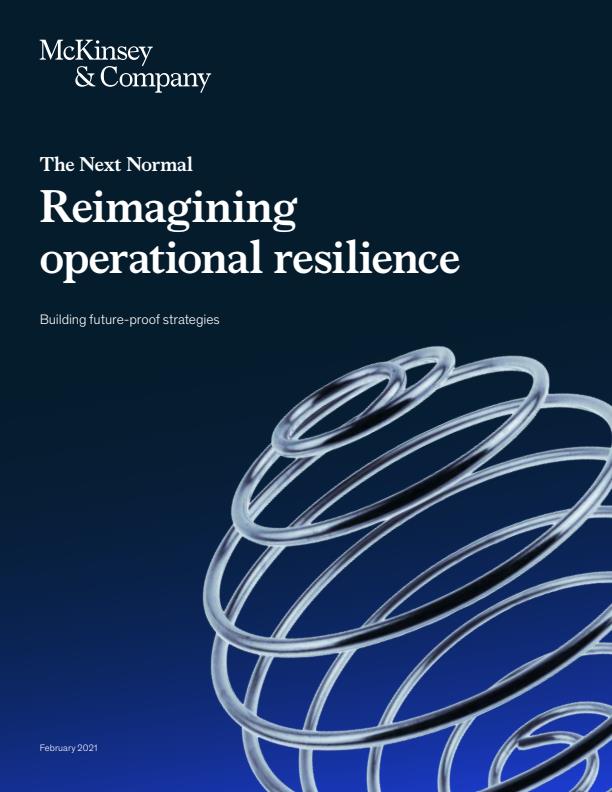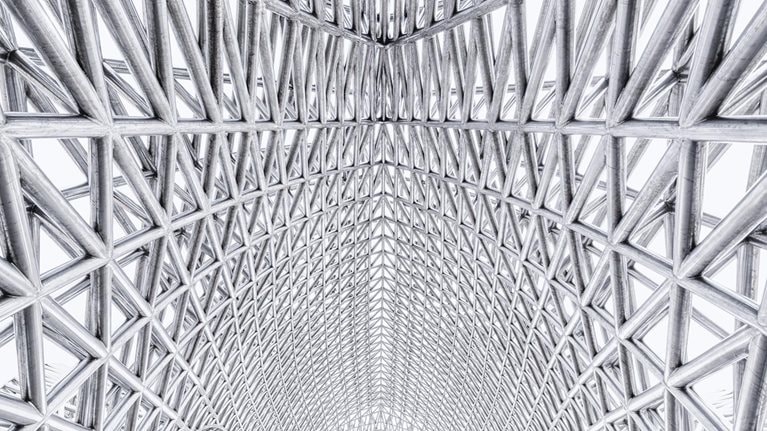The global pandemic has put resiliency on the agenda of every company in the world. As they cope with the seismic changes brought about by COVID-19, businesses of all sizes and types have needed to adapt to remote work, reconfigured physical workspaces, and revised logistics and supply networks. They’ve also changed operating procedures to cope with the pandemic’s risks and effects. The fallout has been enormous and has demonstrated in the clearest way the direct connection between operational efficiency and economic prosperity.
But what do companies do now? The reality is that supply chain shocks are usually impossible to predict but happen with frustrating regularity. That means real value is at stake. According to McKinsey research, companies report that one month or more of disruptions occur every 3.7 years, resulting in losses worth almost 45 percent of one year’s EBITDA over the course of a decade.
The promising news is that organizations can both protect against downside risks, such as pandemics, and gain substantial economic returns from increased output and productivity. The successful companies today—and in the years ahead—will redesign their operations and their supply chains to protect against a wider and more acute range of potential shocks and disruptive events. “The need for visibility on both the demand and supply side is what will enable organizations to withstand disruptions with minimal impact to productivity—and potentially while improving productivity,” says Katy George, a senior partner at McKinsey & Company.
The leading companies today are building new levels of resiliency in three ways:
- Revisiting their supply base and global asset footprint
- Moving quickly to digitize operations end to end
- Transforming business models to achieve cross-functional agility in operations
The organizations we’ve spoken with recognize that resilience isn’t just about dealing with the issues and challenges of today. Rather, it’s also creating a culture fortified with technology and digital tools that enable them to see around corners, to be ready for the changes that are yet to come. The very definition of resilience—the ability to recover quickly from difficulties—is being deployed across these companies with striking speed. Now is not the time to hit pause. Now is the time to reimagine supply chains, adapt and overcome the longstanding idea that there needs to be a trade-off between efficiency, growth, and resilience.
Rethinking the global asset footprint
One of the more noticeable outgrowths of the pandemic is that product value chains have become more regionalized. That trend is likely to accelerate as companies reassess the risks of globally integrated asset networks and supply chains that too often create single points of failure. The worldwide health crisis has caused companies to rethink their make-versus-buy options to create greater flexibility across supply sources.
This approach, powered with new digital and analytic technologies, says George, could improve the security of supply while also reducing costs and allowing production to ramp up or down more rapidly to meet fluctuating demand. Companies are also taking a closer look at the suppliers in their value chain in order to gain a better understanding of their production footprint and financial stability. In fact, in a recent McKinsey survey, two-thirds of respondents reported asking key suppliers whether they have business continuity plans in place.
The need for visibility on both the demand and supply side is what will enable organizations to withstand disruptions with minimal impact to productivity—and potentially while improving productivity.
Resilience is an internal trait, but the disciplines and strategies that support it can also have a far wider reach. Danone, the French food and beverage company, is committed to operating in a way that connects the health of consumers with the health of the planet, CEO Emmanuel Faber says. In 2019, the company was tasked with creating a coalition of about 20 leading food and agriculture companies to make the global dairy industry more sustainable by helping dairy farmers transition to regenerative agriculture practices.
“Focusing on regenerative agriculture practices, making sure the soil is healthier, that more water can be saved, helps to ensure that there will be a next generation farm and, therefore, sustainable revenue for farmers,” Faber says. By incorporating regenerative agriculture into the supply chains of the coalition members, advances in improvements to soil and dairy practices can reach a point where they can actually improve the local and global ecosystem. These resilient, or regenerative, outcomes can increase the nutritional profile and water-storing capability of the soil, thereby helping farmers have a future, Faber says.
In 2019, Danone was tasked with creating a coalition of about 20 leading food and agriculture companies to make the global dairy industry more sustainable by helping dairy farmers transition to regenerative agriculture practices.
Moving quickly to digitize operations end to end
One key to identifying risks, and predicting disruptions and responding to them, is to have a detailed understanding of your supply chain. But most large firms have only a murky view beyond their tier-one and, perhaps, some large tier-two suppliers. Many companies are surprisingly unfamiliar with suppliers of critical components in deeper tiers.
Accelerating end-to-end digitization can enable organizations to have visibility across the whole value chain—from the production of raw materials to the end customer—and better meet the needs of their customers. A bonus: it improves the agility and responsiveness of operations without increasing costs. In fact, research by the World Economic Forum, in collaboration with McKinsey, shows that companies often achieve significant and simultaneous improvements in multiple performance measures when they integrate advanced digital technologies across the value chain. The research shows many companies report:
- Productivity increases of up to 90 percent
- Lead time reduction of up to 80 percent
- Speed-to-market improvements of up to 100 percent
- Energy efficiency improvements of up to 50 percent

Arvind Krishna, who took over as CEO of IBM on April 6, knows a thing or two about resilience. The 30-year veteran of the tech giant assumed the top spot just as the company was sending 350,000 global employees to work from home when the coronavirus began to spread. In the weeks that followed, IBM began operating hundreds of data centers remotely and quickly trained leaders to understand their new responsibilities to connect with their people and customers in a drastically changed environment.
Krishna says that “resiliency is about adaptability in this environment, as well as having a sustainable business for ourselves and for our clients. That’s why, within 48 hours, we were able to move more than 95 percent of our employees to work from home. When you’re critically dependent upon the cyber technologies, you need to up the level of resilience, and design your applications and your infrastructure in a way that never goes down.”
Transforming business models to achieve cross-functional agility in operations
There isn’t a CEO or management team on earth who could have predicted the health, financial, and economic turmoil caused by the coronavirus pandemic. However, the dramatic shifts that are occurring in customer expectations, demand patterns, and industry structures are creating rich opportunities for equally dramatic shifts in companies’ operations and beyond. As business leaders re-examine the role that operations play in connecting with customers, they’re discovering that resiliency is a core competency that cannot be underestimated or tended to only in challenging times.
Digital approaches can transform the customer experience and significantly boost the financial and cultural value of a company when applied end to end.
For Walmart, embracing resilience is rewiring the way business operates for equity, environmental sustainability, and economic prosperity. “Those three things go hand in hand,” says Kathleen McLaughlin, chief sustainability officer at the retail giant. During the pandemic, she says the company redoubled its resolve to bolster the sustainability of its supply chain. Walmart’s Project Gigaton initiative, launched in 2017, for example, aims to reduce 1 billion metric tons (a gigaton) of greenhouse gas emissions from the company’s supply chain by 2030.
Resiliency is about adaptability in this environment, as well as having a sustainable business for ourselves and for our clients.
So far, more than 2,300 of Walmart’s suppliers have signed on, and have reported that their own sustainability efforts in packaging, transportation, food waste, and innovation have enabled them to decrease emissions by 136 million metric tons. “We find that when you have a more resilient supply chain in terms of environmental practices today,” McLaughlin says, “it makes for better resilience and flexibility in the future.”
The pandemic is testing the resolve and resiliency of leaders, employees, and governments the world over. The companies that withstand this seismic disruption—and come out even better on the other side—understand that resiliency isn’t just one lever to be pulled but a combination of actions, technologies, strategies, and goals set today and worked on every day after. “That’s how long-term strategic advantage is won,” George says. “Resiliency is being ready for tomorrow.”
Go behind the scenes and get more insights with “Katy George: How organizations can build a resilient business for the next normal” from our New at McKinsey blog.


